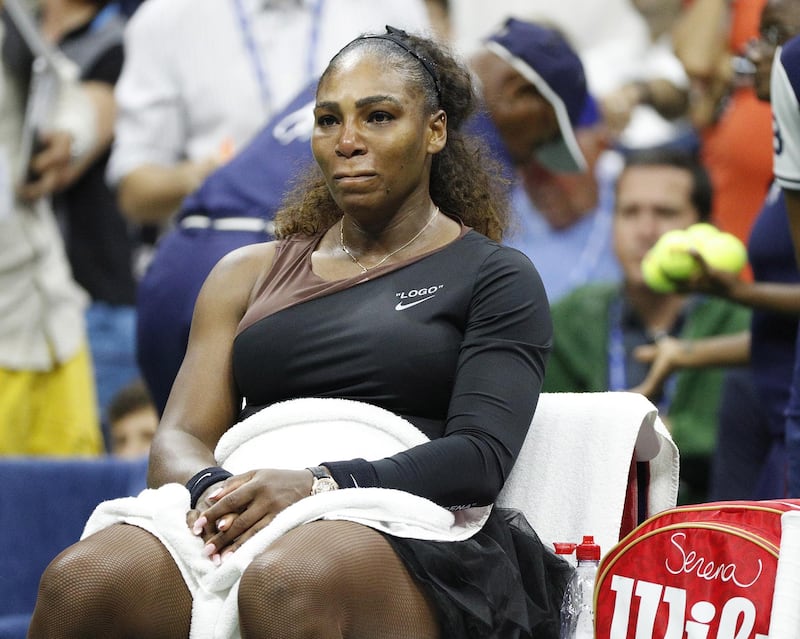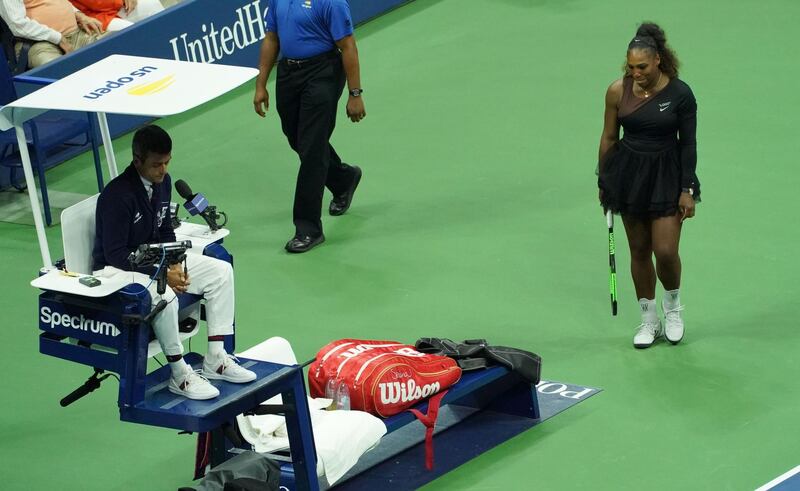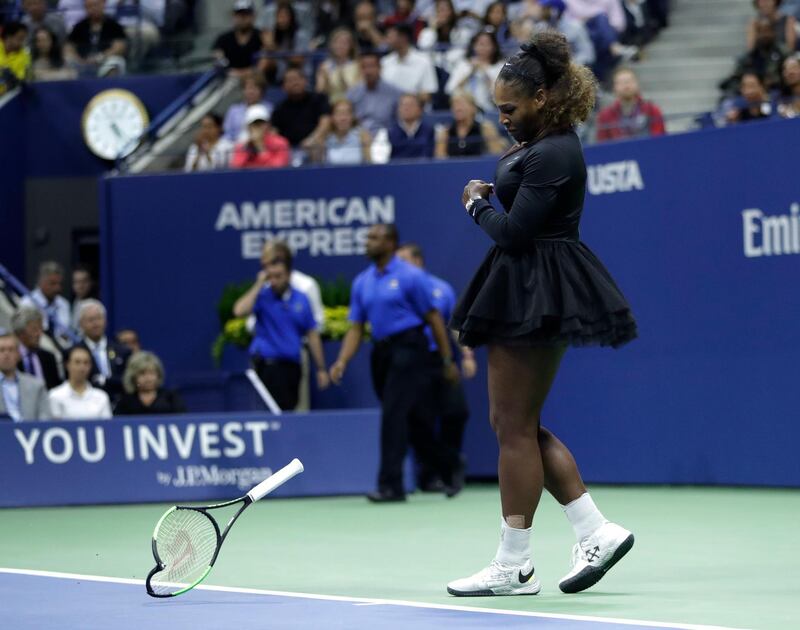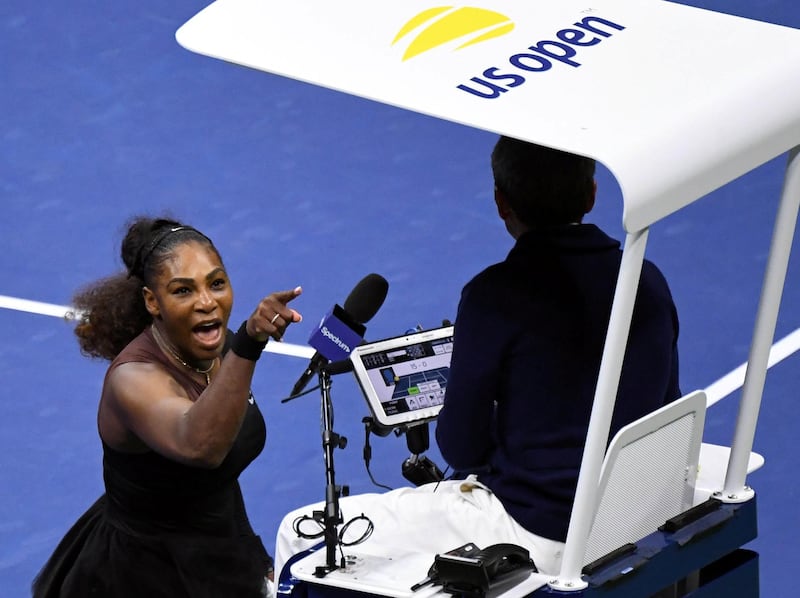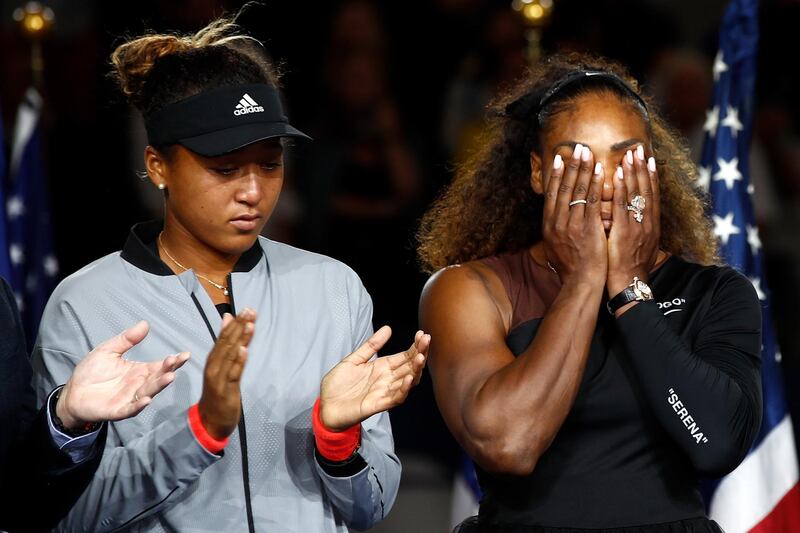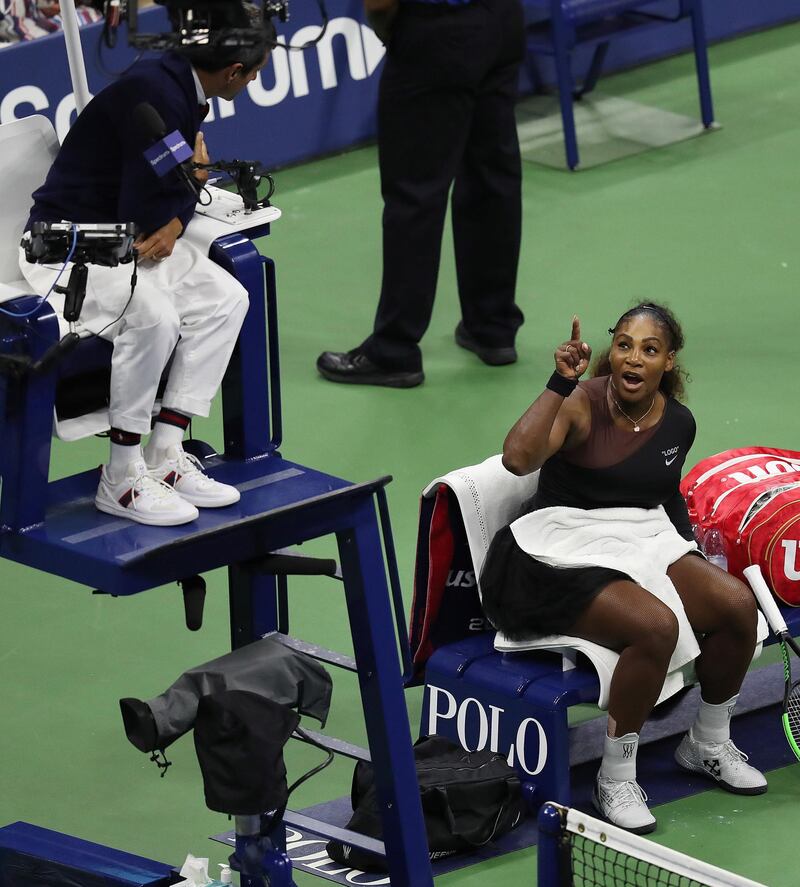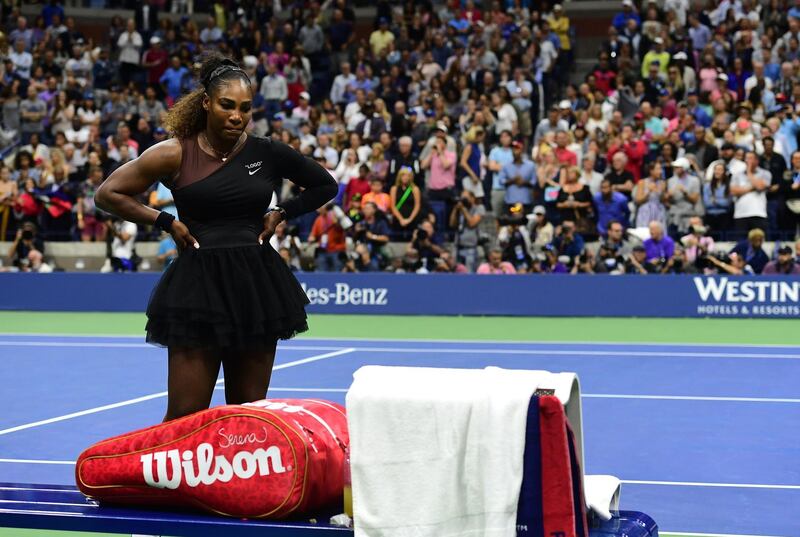Serena Williams cried sexism after an extraordinary meltdown during her US Open final defeat by Naomi Osaka.
The headlines were supposed to be about Williams' bid for a record-equalling 24th grand slam title and Osaka trying to become Japan's first slam winner, but instead an argument with umpire Carlos Ramos that escalated dominated the match.
Here's how it all unfolded during the match.
Coaching
Williams was furious when she was given a coaching violation in the second game of the second set after a hand gesture from her coach Patrick Mouratoglou, telling Ramos: "I don't cheat to win. I'd rather lose."
Mouratoglou admitted in an interview with ESPN that he was trying to advise her with a hand gesture, although Williams was apparently oblivious.
Smashed racquet
Williams was up 2-1 on the changeover when she spoke again with Ramos, appearing to smooth things over, and she finally found a way to break Osaka for a 3-1 lead. It didn't last long. When Osaka broke back with the aid of two double faults, Williams smashed her racquet and was docked a point for a second violation. Continuing her argument with Ramos at the next change of ends, Williams accused him tearfully of being a "thief" for taking a point away from her.
Verbal assault
After Osaka broke for a 4-3 lead Williams continued her verbal assault on Ramos, who docked her a game for a third violation that put Osaka up 5-3. Osaka – who displayed not only a stellar game, but also remarkable poise throughout – held serve to seal a historic win.
______________
Read more:
Naomi Osaka shows killer instinct, soft heart in grand slam breakthrough
Naomi Osaka wins US Open after Serena Williams 'umpire thief' meltdown
Serena Williams defends her integrity after US Open final controversy
Naomi Osaka's US Open win rare good news in disaster-hit Japan
Comment: Novak Djokovic's tennis dynasty set to recommence with US Open triumph
______________
